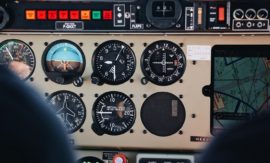Intended learning outcomes: Differentiate various techniques for order release. Explain in detail shop floor control. Present methods and techniques used for order monitoring and shop floor data collection. Describe distribution control.
Using the reference model for business processes and planning & control tasks from Figure 5.1.4.2, Figure 15.0.0.1 highlights the tasks and processes (darker background) that are the focus of this chapter. Sections 1.2.3, 5.3.3, and 5.3.4 also serve as introductions to this material. We suggest that you review these Sections before studying this chapter.
Fig. 15.0.0.1 The parts of the system treated in this chapter.
Chapters 11 and 12 on materials management showed the derivation of resource requirements for long-term and medium-term planning from independent demand (customer orders and forecasts). This results in order proposals for production and procurement. These are proposals for blanket orders or proposals for specific orders for a product, depending on the temporal range. The present chapter now turns to planning & control tasks in the short-term planning horizon, i.e., order release and control, in the areas of distribution, production, and procurement. Section 5.4 discussed possible concepts and methods in the area of R&D.
Control, used in a traditional sense, means the regulation and coordination of orders to achieve successful order completion, following the flow of goods from controlled release of order proposals through value-adding activities to manufacture and distribution of salable products.(See here the discussion on the term control in Section 1.1.8.)
Each order release entails a new scheduling calculation and availability test of the needed resources using techniques of materials management, scheduling, and capacity management. If orders compete, there are techniques for choosing those that should be released.
The orders are then controlled through the areas (job shops for parts production, assembly, and so on, or for procurement). Electronic control boards (Leitstand), or planning boards, are also used here. Accompanying documents are prepared. Order control also includes the loading of infrastructures for picking and distribution. A shop floor data collection system records progress reports and the resources consumed. Finished products or received goods are inspected, supplied to further production, distribution, or stock and prepared for invoicing.
Course 15: Sections and their intended learning outcomes

Course 15 – Order Release and Control
Intended learning outcomes: Differentiate various techniques for order release. Explain in detail shop floor control. Present methods and techniques used for order monitoring and shop floor data collection. Describe distribution control.

15.1 Order Release
Intended learning outcomes: Describe order proposals for production and procurement as well as order release. Explain load-oriented order release (Loor) and capacity-oriented materials management (Corma).

15.2 Shop Floor Control — Production Activity Control (PAC) — Manufacturing Execution System (MES)
Intended learning outcomes: Describe the issuance of accompanying documents for production. Explain operations scheduling, dispatching, and finite forward scheduling. Present sequencing methods.

15.3 Order Monitoring and Shop Floor Data Collection
Intended learning outcomes: Describe recording issues of goods from stock and completed operations. Produce an overview on progress checking, quality control, report of order termination, and automatic and rough-cut data collection.

15.4 Distribution Control
Intended learning outcomes: Explain order picking, packaging, load building, and transportation to receiver.

15.5 Summary
.

15.6 Keywords
.

15.7 Scenarios and Exercises
Intended learning outcomes: Calculate examples for load-oriented order release (Loor) and for finite forward scheduling. Assess characteristics of capacity-oriented materials management (Corma) and of order Picking.
